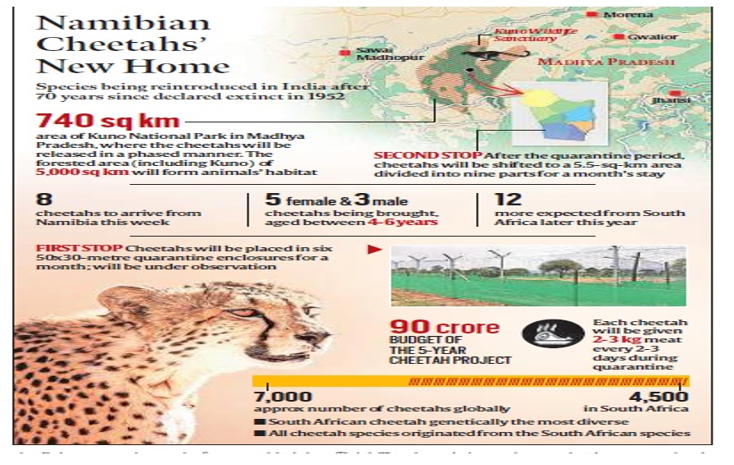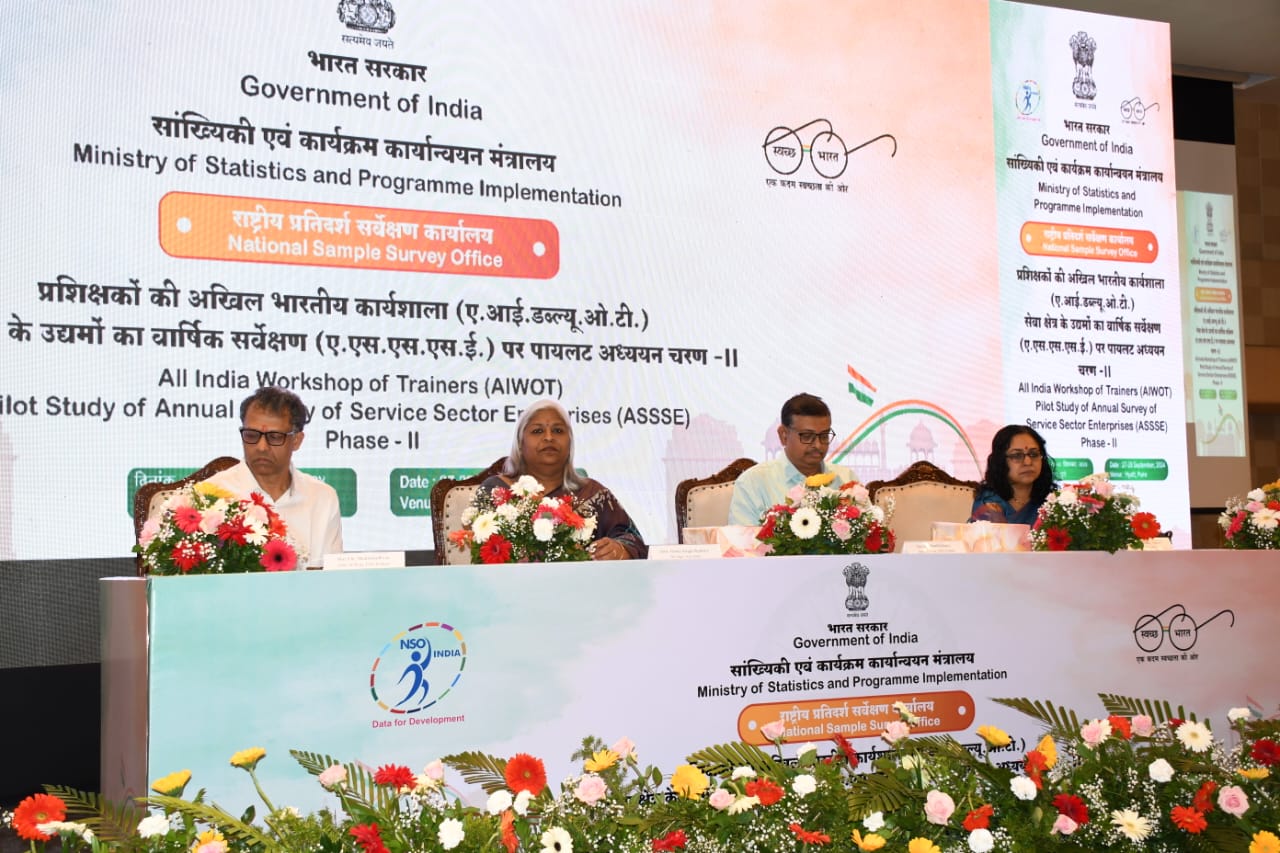- Courses
- GS Full Course 1 Year
- GS Full Course 2 Year
- GS Full Course 3 Year
- GS Full Course Till Selection
- CSAT
- 5 LAYERED ARJUNA Mentorship
- Public Administration Optional
- Online Program
- GS Recorded Course
- NCERT (Recorded 500+ Hours)
- Polity Recorded Course
- Geography Recorded Course
- Economy Recorded Course
- AMAC Recorded Course
- Modern India, Post Independence & World History
- Environment Recoded Course
- Governance Recoded Course
- Science & Tech. Recoded Course
- International Relations and Internal Security Recorded Course
- Disaster Management Module Course
- Ethics Recoded Course
- Essay Recoded Course
- Current Affairs Recoded Course
- ABOUT US
- OUR TOPPERS
- TEST SERIES
- FREE STUDY MATERIAL
- VIDEOS
- CONTACT US
PROJECT CHEETAH AND RADIO COLLAR INFECTIONS
PROJECT CHEETAH AND RADIO COLLAR INFECTIONS
20-07-2023
Latest Context
Unexpected setbacks have recently occurred as a result of the deployment of radio collars in the cheetah reintroduction effort in the Kuno Wildlife Sanctuary, Madhya Pradesh, India. Cheetahs have had neck wounds and septicemia, a bacterial infection of the blood.

Facts about the Radio Collars
- Radio collars are used to track and monitor animals in the wild.
- They consist of a collar with a tiny radio transmitter.
- Animal behaviour, migration, and population dynamics are all tracked using collars.
- For further information, they can be used in conjunction with accelerometers or GPS.
- Animals are intended to wear collars that are lightweight and comfortable.
- Injuries and infections are examples of potential dangers and difficulties that need to be controlled.
Challenges Associated with Radio Collars
-
Festering Neck Wounds and Septicaemia:
- Due to festering neck wounds from radio collars, two cheetahs in Kuno died due to suspected septicaemia.
- Similar wounds have been visible in other cheetahs, including Oban, Elton, and Freddie.
- The use of radio collars in the initiative to reintroduce cheetahs has come under scrutiny as a result of these difficulties.
-
Problems with Long-term Collar Usage:
- Studies on watch wearers and pet dogs demonstrate the drawbacks of carrying anything on the body for an extended period.
- Staphylococcus aureus bacteria presence was higher on watch wearers' wrists, which can lead to sepsis or death.
- Dogs wearing collars may get hot patches or acute wet dermatitis, which ticks or fleas may exacerbate.
- Pressure necrosis and rapid hair loss around the neck, similar to bedsores, can be brought on by tight-fitting collars.
-
Weight Considerations:
- The typical recommendation is to keep the weight of the radio collar below 3% of the animal's body weight.
- For cheetahs weighing between 20 kg and 60 kg, modern collars for wild cats are usually 400g in weight.
- However, because of their short necks, cheetah collar fitting can be difficult, particularly for younger animals.
- Vulnerability to Collar-Induced Injuries:
- The winter coat of a cheetah might hold more water and take longer to dry because it is thicker and furrier than the winter coat of a tiger or leopard.
- A 2020 research that revealed how collar pressures might exceed the collar's weight during movement criticised the collar weight regulation for failing to take animal athleticism into account.
- For instance, it was shown that the pressures applied by collars were often comparable to up to five times the weight of the collar for lions and an astounding 18 times for cheetahs.
- African cheetahs may be more vulnerable to local pathogens than Indian tigers and leopards, possibly as a result of immunity variations and environmental factors.
-
Lack of Adaptation to Monsoon Conditions:
- Due to the drier skin between rainy spells, secondary bacterial infections under collars are less frequently recorded under African circumstances.
- Historically, cheetahs in India did not have collars on during the monsoon and may have changed how they lived in response to the environment.
-
Implications for the Reintroduction Project:
- There are difficulties and probable delays in tracking, immobilising, and evaluating cheetahs for neck injuries.
- The safety of re-collaring cheetahs is a concern given that there is no clear plan for the next monsoon.
What is Cheetah Reintroduction Project in India?
- On September 17, 2022, the Cheetah Reintroduction Project in India officially began. Its goal is to restore the cheetah population, which was declared extinct in the country in 1952.
- Cheetahs will be relocated from South Africa and Namibia to Kuno National Park in Madhya Pradesh as part of the project.
-
Reintroduction Process:
- 20 radio-collared cheetahs were relocated to Kuno National Park from South Africa (12 cheetahs) and Namibia (8 cheetahs).
- India revealed in March 2023 that one of the eight cheetahs that had been transported from Namibia had given birth to four cubs.
- After a period of quarantine, the cheetahs were moved to bigger acclimatisation cages.
- There are currently 11 cheetahs roaming wild and 5 animals, including a cub, are housed in quarantine.
- The free-ranging cheetahs are continuously observed by devoted monitoring teams.
-
Mortalities:
- In Kuno National Park, 8 cheetahs have died from natural causes.
- The National Tiger Conservation Authority (NTCA) has conducted a preliminary study, and it suggests that the fatalities were entirely natural and unrelated to anything else, such as radio collars.
-
Project Implementation and Challenges:
- The Wildlife Institute of India (WII), the Madhya Pradesh Forest Department, and cheetah specialists from Namibia and South Africa work together with the NTCA to carry out the project.
- Monitoring, safeguarding, and managing the reintroduced cheetah population are challenges in the project.
-
Conservation Efforts and Measures:
- To find out what causes cheetah fatalities, veterinarians from South Africa and Namibia are currently consulting with worldwide cheetah experts.
- Monitoring procedures, protection status, management inputs, veterinary facilities, training, and capacity building are all being examined by independent national specialists.
- A Cheetah Research Centre is being established, forest areas under Kuno National Park's administrative authority are being expanded, more front-line employees are being hired, a Cheetah Protection Force is being formed, and a second home for cheetahs is being built at Gandhi Sagar Wildlife Sanctuary.
- The government is dedicated to maintaining and assuring the long-term survival of the reintroduced cheetah population.
Must Check: IAS Coaching Centre In Delhi



